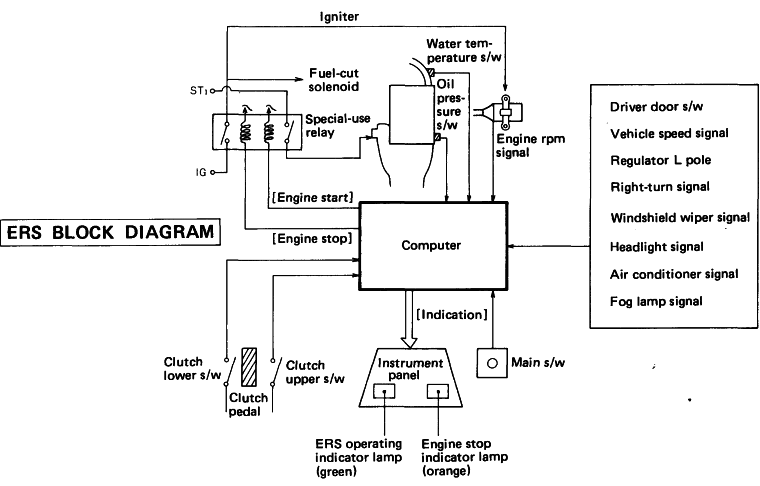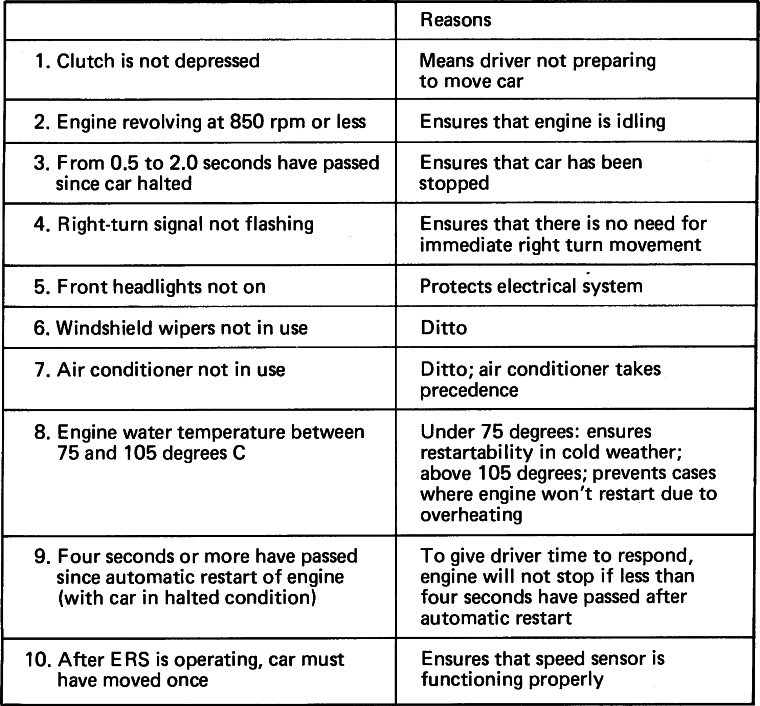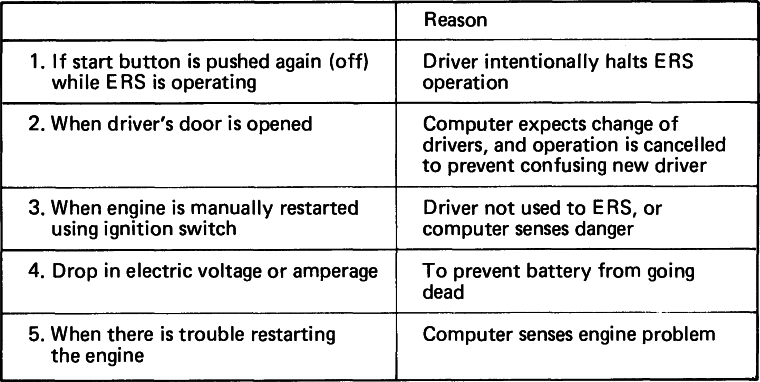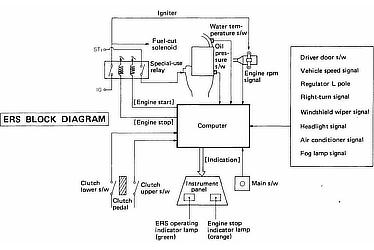Aug. 19, 1981
TOYOTA INTRODUCES FUEL-SAVING ECONOMY RUNNING SYSTEM (ERS)
Toyota announced that it has developed and made available commercially a highly fuel-efficient, microcomputer-controlled Economy Running System (ERS). This system is being offered as standard equipment in one model of the New Starlet―the smallest of Toyota's line of passenger cars―that was introduced today with minor changes.
ERS Outline and Development Goals
ERS, a Toyota exclusive, is the first system of its kind anywhere in the world. This innovative mechanism uses a microcomputer to monitor a car's operating condition and automatically eliminate all unnecessary engine idling when the car is stationary.
When a car must stop for some reason, with its engine still running, ERS automatically cuts off the flow of fuel to the engine. When the driver is ready to move forward again, the engine can be restarted simply by depressing the clutch pedal. By preventing unnecessary engine idling ERS saves about 7 cc of gasoline per minute.
To prevent the waste of fuel during idling, Toyota started in December 1971 to develop an Engine Automatic Stop and Start System (EASS). Although this system was put on the market in January 1974 under the EASS name, Japan's drivers were not as conscious then as now of the need to conserve fuel, and the EASS kit did not prove popular.
After that initial effort, Toyota substantially improved the system's performance and reliability, developing the ERS that is now available as an option on the new Starlet. This innovative fuel conservation system exactly answers today's pressing need for fuel conservation and is especially suitable for cars driven on Japan's crowded roads. Toyota has already acquired 20 patents for the ERS in six nations: first, in France in July 1972, and afterward in Japan, the U.S., West Germany, the U.K. and Canada. Applications for another 40 patents have been submitted.

Increases Fuel Efficiency
In an ordinary urban driving situation, approximately 30-40 percent of the total time needed to make a trip is spent with the car halted―because of traffic congestion, for example, or while waiting for traffic lights. While a car is halted, of course, the engine is idling and fuel is being consumed.
The ERS mechanism conserves the 7 cc of gasoline per minute that is normally consumed while an engine is idling. The most fuel-efficient passenger car in the 1300 cc class in Japan, according to Ministry of Transport 10-mode tests, is the 5-speed manual-shift Toyota Starlet 1300 DX-A, providing average mileage of 18.5 km/L. In ordinary urban driving, use of ERS will provide additional fuel efficiency of about 0.5-1.0 km/L, and the savings will increase as traffic congestion worsens.
How the System Works
A microcomputer closely monitors engine operation, ensuring that the engine stops and restarts smoothly and safely, and protecting the starter, battery and other components of the car's electrical system from harm.
To ensure safe operation, the microcomputer will not stop the engine if the driver's door is open, the car's right-hand turn signal is on (motor vehicles drive on the left side of the road in Japan, and right turns are thus made across the oncoming traffic lane) or the front headlights are on (stopping the engine would harm the car's electrical system).
The various preconditions for start of ERS operation, for its cancellation and for automatically stopping and restarting the engine are as follows.
Start of ERS Operation
After starting the engine by turning on the ignition switch, the driver pushes a button which starts up the microcomputer. The microcomputer first checks the items listed below and then uses a buzzer and a green indicator lamp on the instrument panel to tell the driver that the system is operating.

Automatic Stopping of Engine
When ERS is operating, the engine will be stopped automatically if the following 10 conditions are met, and an orange indicator lamp will light on the instrument panel.

Engine Restart
If the clutch pedal is depressed completely to the floor while the engine is in automatic stop condition, a special-use starter relay is closed and the engine restarts automatically.
Cancelling ERS Operation
If any one of the following five conditions is met, operation of the entire ERS system is halted. Afterward the system can be put back into operation by pressing the start button with the engine running. If the button is not pushed, the car functions the same as a car without ERS.

For the time being, ERS will be available for the domestic market as standard equipment only on the Starlet 1300 DX-A, 5-speed manual shift model.





